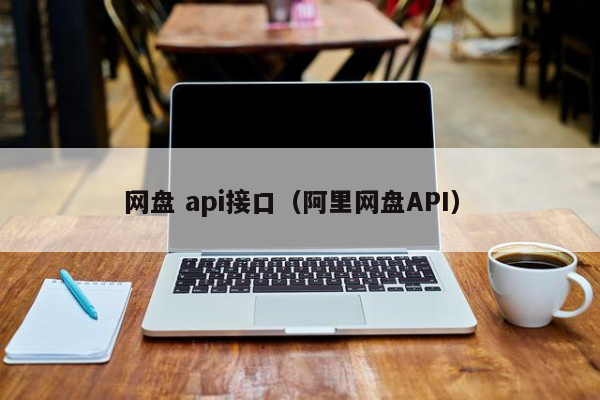本篇文章给大家谈谈网盘 api接口,以及阿里网盘API对应的知识点,希望对各位有所帮助,不要忘了收藏本站喔。
今天给各位分享网盘 api接口的知识,其中也会对阿里网盘API进行解释,如果能碰巧解决你现在面临的问题,别忘了关注本站,现在开始吧!
本文目录一览:
如何使用百度云API接口
http://developer.baidu.com/wiki/index.php?title=%E5%B8%AE%E5%8A%A9%E6%96%87%E6%A1%A3%E9%A6%96%E9%A1%B5/%E8%B5%84%E6%BA%90%E4%B8%8B%E8%BD%BD
学习了百度云盘文件API接口
网盘 api接口的使用;初步是想做一个在线android应用
网盘 api接口,应用中的文档是存放在百度云盘的。
主要是分一下几个步骤:
1.注册百度账号
2.登录百度开发者中心
3.创建移动应用,获取对应的(API Key Secret Key)
4.开通pcs API权限
5.获取ACCESS_token(认证编码)
6.开发应用
注意:
开通移动应用,获取key
获取token的时候我使用的安卓获取的方式
通过我写对应api的例子我发现,其实就两种情况:一种是get方式提交数据,另外一种是post方式提交数据
1.get方式提交数据,我们用获取云盘的信息为例:
获取云盘信息前我们要知道,我们要准备好什么数据:
请求参数:
url: 标明我们要访问的网址路径 值固定问""
method:标明我们是请求云盘信息 值固定为"info"
acceess_token:准入标识 值是我们自己申请的
接收返回参数:
quota:云盘总容量
used:云盘使用容量
request_id:该请求的表示,没啥用
返回的一个json串如下格式:{"quota":123794882560, "used":83573494688,"request_id":2853739529}
我在做的时候你使用Gson工具将json串转换到对应的entity类中了 代码如下:
[html] /**
* @param URLConnection conn通过get方式获取StringBuffer
* @return
*/
private StringBuffer getJsonString(URLConnection conn) {
InputStreamReader isr = null;
BufferedReader br = null;
StringBuffer sb = null;
try {
isr = new InputStreamReader(conn.getInputStream(),"gb2312");
br = new BufferedReader(isr);
String line = null;
sb = new StringBuffer();
while ((line = br.readLine()) != null) {
sb.append(line);
sb.append("\r\n");
}
} catch (UnsupportedEncodingException e) {
e.printStackTrace();
} catch (IOException e) {
e.printStackTrace();
}finally{
try {
if(isr!=null)
isr.close();
} catch (IOException e) {
System.out.println("流关闭是异常");
e.printStackTrace();
}
}
return sb;
}
/**
* @return
* @throws Exception
* 获取云空间的信息
*/
public CloudInfo getCloudInfo() throws Exception {
URL u = new URL("?method=infoaccess_token=你申请的token的值";
URLConnection conn = u.openConnection();// 打开网页链接
// 获取用户云盘信息
String cloudJson = this.getJsonString(conn)。toString();
// 解析成对象 下面有这个实体对象的类
Gson gson = new Gson();
CloudInfo cloudInfo = gson.fromJson(cloudJson, CloudInfo.class);
System.out.println("云盘信息:"+cloudInfo);
return cloudInfo;
}
/**
* @param URLConnection conn通过get方式获取StringBuffer
* @return
*/
private StringBuffer getJsonString(URLConnection conn) {
InputStreamReader isr = null;
BufferedReader br = null;
StringBuffer sb = null;
try {
isr = new InputStreamReader(conn.getInputStream(),"gb2312");
br = new BufferedReader(isr);
String line = null;
sb = new StringBuffer();
while ((line = br.readLine()) != null) {
sb.append(line);
sb.append("\r\n");
}
} catch (UnsupportedEncodingException e) {
e.printStackTrace();
} catch (IOException e) {
e.printStackTrace();
}finally{
try {
if(isr!=null)
isr.close();
} catch (IOException e) {
System.out.println("流关闭是异常");
e.printStackTrace();
}
}
return sb;
}
/**
* @return
* @throws Exception
* 获取云空间的信息
*/
public CloudInfo getCloudInfo() throws Exception {
URL u = new URL("?method=infoaccess_token=你申请的token的值";
URLConnection conn = u.openConnection();// 打开网页链接
// 获取用户云盘信息
String cloudJson = this.getJsonString(conn)。toString();
// 解析成对象 下面有这个实体对象的类
Gson gson = new Gson();
CloudInfo cloudInfo = gson.fromJson(cloudJson, CloudInfo.class);
System.out.println("云盘信息:"+cloudInfo);
return cloudInfo;
}
[html] package com.entity;
import java.lang.reflect.Type;
/**
* @author ydcun 获取云空间的信息 例如:
* {"quota":123794882560, 空间配额,单位为字节
* "used":83573494688, 已使用空间大小 单位为字节。
* "request_id":2853739529}
*/
public class CloudInfo{
private Double quota;
private Double used;
private Double request_id;
/**
* @return the quota 空间配额,单位为字节
*/
public Double getQuota() {
return quota;
}
/**
* @param quota the quota to set 空间配额,单位为字节
*/
public void setQuota(Double quota) {
this.quota = quota;
}
/**
* @return the used 已使用空间大小 单位为字节
*/
public Double getused() {
return used;
}
/**
* @param used the used to set 已使用空间大小 单位为字节
*/
public void setused(Double used) {
this.used = used;
}
/**
* @return the request_id
*/
public Double getRequest_id() {
return request_id;
}
/**
* @param request_id the request_id to set
*/
public void setRequest_id(Double request_id) {
this.request_id = request_id;
}
@Override
public String toString() {
return new StringBuffer()。append("空间容量:")。append(this.getQuota()/1024/1024)。append("M; 已用:")。append(this.getused()/1024/1024)。append("M; ")。toString();
}
}
package com.entity;
import java.lang.reflect.Type;
/**
* @author ydcun 获取云空间的信息 例如:
* {"quota":123794882560, 空间配额,单位为字节
* "used":83573494688, 已使用空间大小 单位为字节。
* "request_id":2853739529}
*/
public class CloudInfo{
private Double quota;
private Double used;
private Double request_id;
/**
* @return the quota 空间配额,单位为字节
*/
public Double getQuota() {
return quota;
}
/**
* @param quota the quota to set 空间配额,单位为字节
*/
public void setQuota(Double quota) {
this.quota = quota;
}
/**
* @return the used 已使用空间大小 单位为字节
*/
public Double getused() {
return used;
}
/**
* @param used the used to set 已使用空间大小 单位为字节
*/
public void setused(Double used) {
this.used = used;
}
/**
* @return the request_id
*/
public Double getRequest_id() {
return request_id;
}
/**
* @param request_id the request_id to set
*/
public void setRequest_id(Double request_id) {
this.request_id = request_id;
}
@Override
public String toString() {
return new StringBuffer()。append("空间容量:")。append(this.getQuota()/1024/1024)。append("M; 已用:")。append(this.getused()/1024/1024)。append("M; ")。toString();
}
}
2.通过post方式提交 我用上传单个文件为例子:
同样我们也先了解下上传文件要参数设置:
请求参数:
url: 标明我们要访问的网址路径 值固定问""
method:标明我们是请求云盘信息 值固定为"upload"
acceess_token:准入标识 值是我们自己申请的
path:是我们要上传到云盘的那个路径下 如/apps/myBaiduCloud/ myBaiduCloud是我们的应用名称(当你获取koten后就会自动生成以你应用名称为名的文件夹)
file:这个就是我们要上传的文件了(要求用post方式上传)
ondup:可选参数,标识当有重名的文件的时候处理方式具体见api
接收返回参数:
返回的也是json串,
path:为我们上传的文件保存的全路径
size:文件的大小有多少字节
ctime/mtime:文件的创建修改时间
其
网盘 api接口他参数介绍点小标题去api中查看
{
"path" : "/apps/album/README.md"
"size" : 372121,
"ctime" : 1234567890,
"mtime" : 1234567890,
"md5" : "cb123afcc12453543ef",
"fs_id" : 12345,
"request_id":4043312669
}
我在做的时候也是将其封装到实体类中了,这里和上面一样不详述,我们重点看下提交文件是怎么提交的代码如下:
[java] /**
* @param path 云盘存放路径
* @param name 要上传的文件
* @return
* @throws Exception
*/
public FileBase uploadFile(String path,File file) throws Exception{
//模拟文件
String fileName="README.md";
file = new File(fileName);
path="%2fapps%2fmybaidu%2f"; // 我用的是url编码过源码为:- "/apps/mybaidu/
/"
//将需要url传值的参数和url组装起来
String u =""+path+file.getName()+"method=uploadaccess_token=你自己申请的token值";
PostMethod filePost = new PostMethod(u);
//post提交的参数
Part[] parts = {new FilePart(fileName,file)};
//设置多媒体参数,作用类似form表单中的enctype="multipart/form-data"
filePost.setRequestEntity(new MultipartRequestEntity(parts, filePost.getParams()));
HttpClient clients = new HttpClient();
//响应代码
int status = clients.executeMethod(filePost);
System.out.println("成功上传"+path+fileName);
BufferedReader buReader = new BufferedReader(new InputStreamReader(filePost.getResponseBodyAsStream(),"utf-8"));
StringBuffer sb = new StringBuffer();
String line;
while((line=buReader.readLine())!=null){
sb.append(line);
}
buReader.close();
// 解析成对象
Gson gson = new Gson();
FileBase cloudInfo = gson.fromJson(sb.toString(), FileBase.class);
return cloudInfo;
}
/**
* @param path 云盘存放路径
* @param name 要上传的文件
* @return
* @throws Exception
*/
public FileBase uploadFile(String path,File file) throws Exception{
//模拟文件
String fileName="README.md";
file = new File(fileName);
path="%2fapps%2fmybaidu%2f"; // 我用的是url编码过源码为:- "/apps/mybaidu/
/"
//将需要url传值的参数和url组装起来
String u =""+path+file.getName()+"method=uploadaccess_token=你自己申请的token值";
PostMethod filePost = new PostMethod(u);
//post提交的参数
Part[] parts = {new FilePart(fileName,file)};
//设置多媒体参数,作用类似form表单中的enctype="multipart/form-data"
filePost.setRequestEntity(new MultipartRequestEntity(parts, filePost.getParams()));
HttpClient clients = new HttpClient();
//响应代码
int status = clients.executeMethod(filePost);
System.out.println("成功上传"+path+fileName);
BufferedReader buReader = new BufferedReader(new InputStreamReader(filePost.getResponseBodyAsStream(),"utf-8"));
StringBuffer sb = new StringBuffer();
String line;
while((line=buReader.readLine())!=null){
sb.append(line);
}
buReader.close();
// 解析成对象
Gson gson = new Gson();
FileBase cloudInfo = gson.fromJson(sb.toString(), FileBase.class);
return cloudInfo;
}
上面代码成功后我们就会在/apps/mybaidu/目录下找到README.md文件
commons-codec-1.3.jar
commons-
commons-logging.jar
gson-2.2.1.jar
jsoup-1.6.3.jar

python 和彩云网盘 API接口
Authorization: Bearer 编码后的AccessToken(AccessToken经过Base64编码后的字符串)
通常 Bearer 后有一个空格的,以前研究过酷盘的api 就是因为少错,加个空格老报,加一个试试
cloudserverapi怎么用
cloud server的api接口的用法如下网盘 api接口:
电脑:华为笔记本。
系统:Windows10专业版2004。
工具:API Cloud3.0。
1、选择相应的应用网盘 api接口,进入“云开发”下的“云设置”选项卡网盘 api接口,点击“开启数据云”网盘 api接口,为你的应用开启数据服务。
2、进入“云开发”下的“Database”选项卡,创建数据对象。
3、每个APICloud应用开启数据服务后,都将会默认拥有如上图中的user等5个数据对象。点击其中的“创建Class”按钮。
4、在弹出框中输入相应的对象名后,点击创建即可。回到先前页面后你的对象列表下就多出网盘 api接口了“Order”对象,该对象即为新创建的数据对象,给该对象增加相应的列之后,即可在Javascript代码中,通过model等数据模块下的相应API对该数据对象进行操作了。
免费的云存储 api
云储存api就是指网盘开放api接口
网盘 api接口,让具有开发能力
网盘 api接口的第三方应用或用户可以介入
网盘 api接口,亿方云网盘就支持api接口开放,比如说工作上
网盘 api接口的邮件,就能直接通过api接口以附件的形式传送保存到亿方云中,大大提高管理文件的效率。
关于网盘 api接口和阿里网盘API的介绍到此就结束了,不知道你从中找到你需要的信息了吗 ?如果你还想了解更多这方面的信息,记得收藏关注本站。
网盘 api接口的介绍就聊到这里吧,感谢你花时间阅读本站内容,更多关于阿里网盘API、网盘 api接口的信息别忘了在本站进行查找喔。
版权声明:本文内容由网络用户投稿,版权归原作者所有,本站不拥有其著作权,亦不承担相应法律责任。如果您发现本站中有涉嫌抄袭或描述失实的内容,请联系我们jiasou666@gmail.com 处理,核实后本网站将在24小时内删除侵权内容。

暂时没有评论,来抢沙发吧~